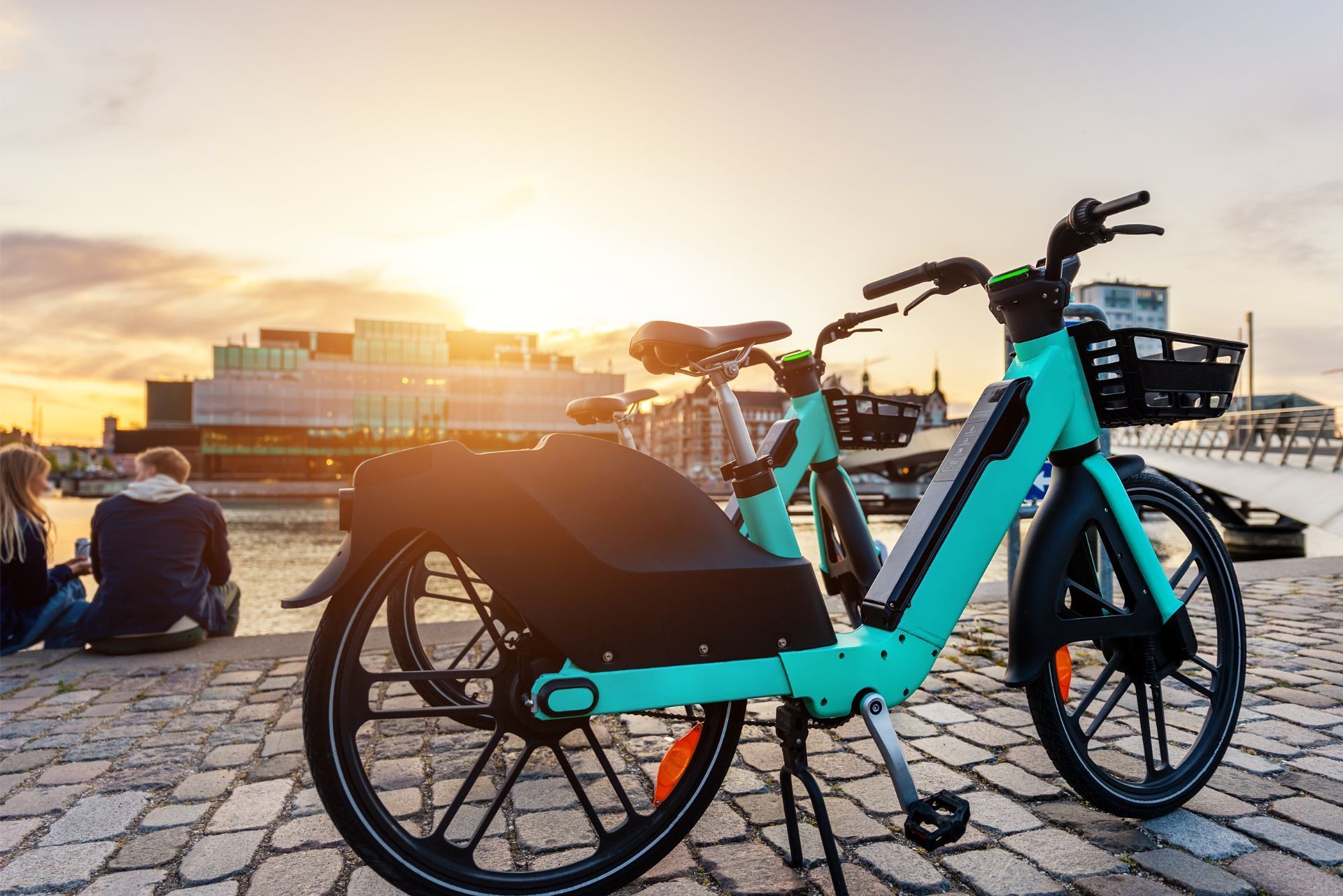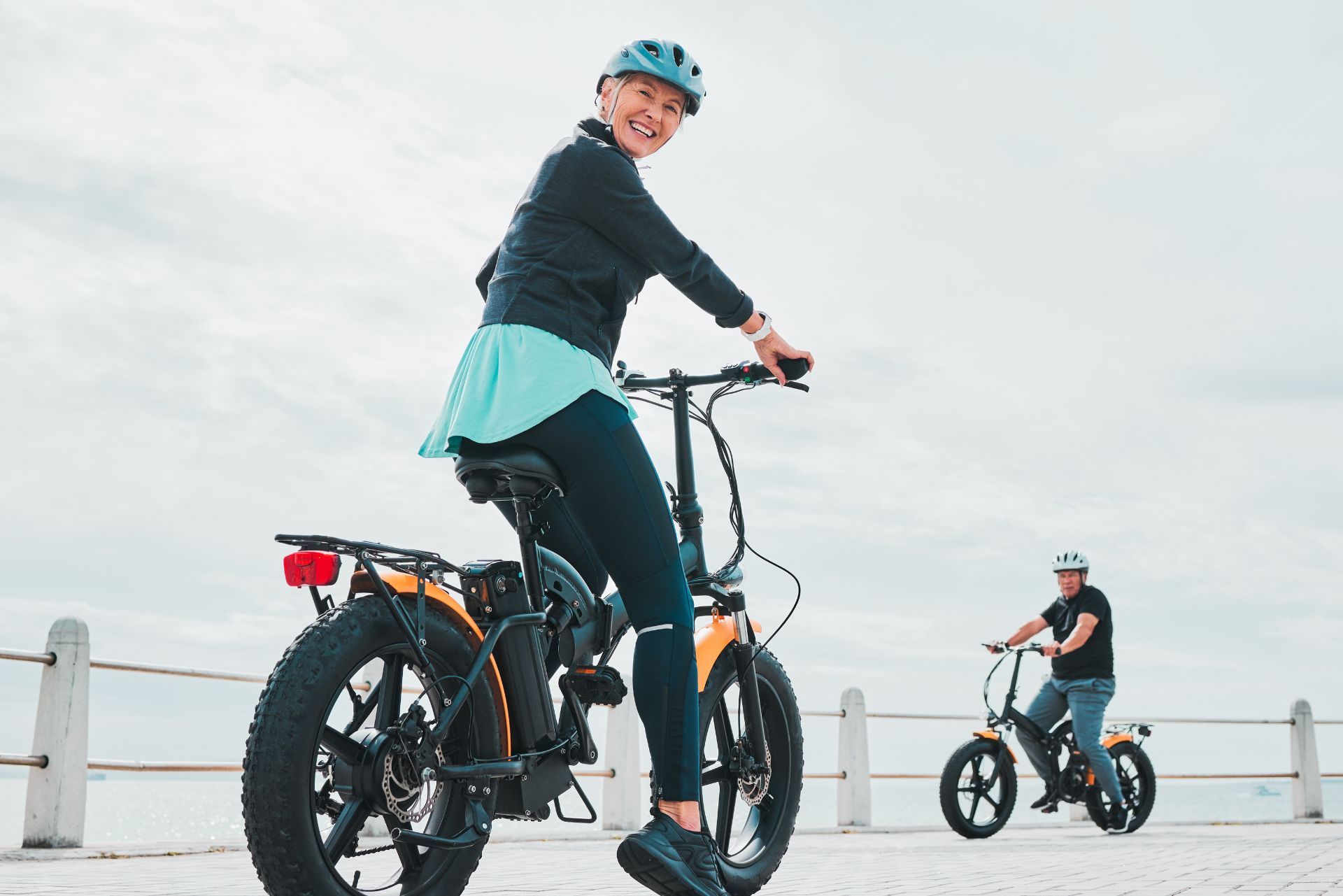Top 3 Recommended Policies

By: David Graves
Licensed Personal Insurance Specialist
425-320-4280
Electric bicycles have become a familiar sight from the Burke-Gilman Trail in Seattle to the Centennial Trail near Spokane. Shoppers use them to haul groceries, commuters use them to flatten hills, and outdoor enthusiasts count on them for weekend adventures. Washington now ranks among the top five U.S. states for per-capita e-bike ownership according to a 2023 report by the Northwest Energy Coalition, and sales are projected to grow another 15 % annually through 2027. With that popularity comes a new set of financial and legal questions, the biggest of which is whether specialized insurance is needed. This guide untangles the rules, costs, and coverage options so Washington riders can pedal with peace of mind.
Why E-Bikes Are Booming Across Washington
The Emerald State offers a near-perfect recipe for e-bike adoption: dense urban cores, a tech-savvy population, progressive environmental policies, and terrain that makes pedal assist attractive. In 2022, Seattle’s Department of Transportation counted an average of 13% of all bicycle traffic on key corridors coming from e-bikes—triple the rate recorded just two years earlier. The statewide e-bike rebate launched in 2024, giving residents up to $300 off certain models, is expected to accelerate growth even more. With gasoline prices hovering near $5 per gallon and Metro transit ridership still catching up to pre-pandemic levels, many Washingtonians view e-bikes as both a cost-effective and climate-friendly alternative.
Moreover, the rise of e-bikes is not just a trend; it reflects a broader cultural shift towards sustainable living. Many cities in Washington are investing in infrastructure to support this growing mode of transportation. Dedicated bike lanes are being expanded, and bike-sharing programs are being introduced, making it easier for residents to access e-bikes without the commitment of ownership. Local businesses are also adapting to this shift, with bike repair shops and e-bike retailers popping up to meet the increasing demand. This ecosystem fosters a community of riders who share tips, routes, and experiences, further enhancing the appeal of e-biking.
Additionally, the appeal of e-bikes extends beyond mere convenience and cost savings. For many, they represent a lifestyle choice that promotes health and well-being. E-bikes allow riders to incorporate exercise into their daily routines without the intimidation factor often associated with traditional biking, especially in hilly areas. This accessibility opens up cycling to a broader demographic, including older adults and those with physical limitations. As more people discover the joy of riding, the social aspect of e-biking is also flourishing, with organized group rides and events becoming increasingly popular across the state, fostering a sense of community among enthusiasts.

Understanding Washington’s E-Bike Classes and Legal Framework
Washington follows the three-class system defined in RCW 46.04.169. Class 1 bikes provide pedal assist up to 20 mph, Class 2 add a throttle but still cut motor power at 20 mph, and Class 3 maintain pedal assist to 28 mph. All three classes must operate with motors under 750 watts, and riders under 16 may not operate Class 3 bikes. While helmets are required in King County and strongly recommended statewide, liability insurance is notably absent from the legal checklist. Nonetheless, different classes dictate where an e-bike may be used: Class 3 models are banned from trails and sidewalks that allow slower classes, placing riders in closer proximity to traffic and increasing exposure to liability risks.
In addition to these classifications, Washington's legal framework also emphasizes the importance of safety and responsible riding. The state encourages e-bike users to familiarize themselves with local laws and regulations, which can vary significantly from one municipality to another. For instance, some cities may have specific ordinances regarding where e-bikes can be parked or whether they can be used on certain paths. Furthermore, as the popularity of e-bikes continues to rise, local governments are increasingly investing in infrastructure to support safe riding. This includes the development of dedicated bike lanes and the installation of charging stations, which not only enhance convenience but also promote a culture of cycling as a sustainable mode of transportation.
Moreover, the growing e-bike community in Washington is fostering a vibrant culture of advocacy and education. Various organizations are working to raise awareness about the benefits of e-biking, such as reduced carbon emissions and improved public health through increased physical activity. Workshops and community rides are often organized to help new riders understand the nuances of e-bike operation, maintenance, and safety. This grassroots movement is essential in shaping public perception and ensuring that e-bikes are viewed as a legitimate and valuable part of the transportation ecosystem, rather than just a novelty item. As more individuals embrace this eco-friendly alternative, the dialogue surrounding regulations and infrastructure continues to evolve, reflecting the changing dynamics of urban mobility.
Is Insurance Legally Required for E-Bikes in Washington?
Technically, no. State legislators have not mandated liability coverage for any e-bike class, and registration plates are not issued. Yet the absence of a legal requirement does not remove financial exposure. Data from the Washington Traffic Safety Commission show a 41% rise in injury collisions involving e-bikes between 2020 and 2023, with average medical bills exceeding $18,000 per incident. Because personal health policies rarely cover third-party damages and homeowners insurance excludes many motor-assisted claims, riders without stand-alone protection can face significant out-of-pocket costs after an accident or theft.
In addition to the financial implications, the rise in e-bike usage has sparked discussions about safety regulations and the responsibilities of riders. As e-bikes become more popular for commuting and recreational purposes, the need for education on safe riding practices is paramount. Many local organizations and bike shops offer workshops that cover essential skills, such as navigating traffic, understanding local laws, and maintaining the e-bike itself. These initiatives aim to empower riders with the knowledge they need to minimize risks and enhance their riding experience, fostering a culture of safety within the growing e-bike community.
Moreover, the lack of insurance requirements has prompted some e-bike manufacturers and retailers to offer optional insurance packages tailored specifically for e-bike riders. These packages often include coverage for theft, damage, and liability, providing peace of mind for those who rely on their e-bikes for daily transportation. As the e-bike market continues to expand, the availability of such insurance products may become more prevalent, encouraging responsible riding and potentially reducing the financial burden on riders involved in accidents.
Risks and Liabilities Unique to E-Bike Riders
E-bikes share risk factors with conventional bicycles—doorings, potholes, inclement weather—but their speed, weight, and lithium-ion batteries introduce additional challenges:
- Collision Impact: A fully loaded cargo e-bike can weigh 75 pounds. When it strikes a vehicle or pedestrian at 25 mph, the kinetic energy rivals that of a small motorcycle, increasing injury potential and property damage costs.• Fire Hazards: Faulty chargers or damaged battery cells may ignite, potentially triggering apartment or garage fires that become six-figure insurance claims.• Theft Rates: The Seattle Police Department logged nearly 900 e-bike thefts in 2023. With average retail prices topping $2,600, uninsured riders often shoulder the entire replacement burden.
Types of Insurance Coverage Available
Insurers package e-bike protection in several ways. The terminology can be confusing, so it helps to break down the common components.
Liability Coverage
Pays for bodily injury or property damage riders cause others. Washington attorneys confirm that personal liability suits stemming from bicycle crashes can exceed $100,000, particularly when pedestrians or multiple cyclists are involved.
Medical Payments (MedPay) or Personal Injury Protection (PIP)
Covers riders and passengers for medical costs after a crash, regardless of fault. Unlike health insurance, MedPay has no deductible and often includes dental and rehabilitation services.
Physical Damage & Theft
Reimburses repair or replacement value of the e-bike itself plus accessories such as lights, racks, and specialized seats. Policies may offer replacement cost or actual cash value; the former avoids depreciation but costs more in premiums.
Uninsured/Underinsured Motorist (UM/UIM)
Protects the rider if struck by a driver who carries insufficient auto insurance—a significant concern in Washington, where the Insurance Research Council estimates 21 % of motorists drive uninsured.
Roadside Assistance & Trip Interruption
Some insurers provide on-demand transport if the motor fails or a battery dies mid-route, plus reimbursement for meals or lodging if a tour is interrupted.
Homeowners & Renters Policy Extensions
Traditional property policies often list bicycles under personal property, but many exclude motorized devices or cap payouts below $1,500. Riders can add scheduled personal property endorsements that eliminate sub-limits and broaden peril coverage, yet liability for on-road use typically remains excluded.
Standalone E-Bike Policies
Dedicated carriers such as Velosurance and Markel tailor coverage to electric two-wheelers, offering higher liability limits (up to $500,000) and optional racing coverage for e-MTB events.
Adding an Endorsement to Auto Insurance
Certain auto insurers now sell “micromobility endorsements” that bundle an e-bike under the driver’s existing policy. This route can be convenient; however, claims filed against an auto policy may raise car insurance rates, so cost-benefit analysis is essential.
Average Cost of E-Bike Insurance in Washington
Premiums vary based on factors like ZIP code theft rates, e-bike class, and rider history, but statewide averages provide a useful benchmark. A 2024 survey of five major carriers found the following mean annual premiums for a $3,000 e-bike with $100,000 liability:
• Stand-alone policy: $110 to $165 per year• Homeowners endorsement: $60 to $95 per year (property coverage only)• Auto micromobility endorsement: $85 to $140 per year
Riders opting for $250,000 in liability and $0 deductible theft coverage can expect premiums near $200 annually. Discounts often apply for U-lock ownership, completion of a League of American Bicyclists safety course, or garaged overnight storage.
Leading Insurers Offering E-Bike Coverage in Washington
The Washington Office of the Insurance Commissioner does not track e-bike policies separately, yet market research identifies several providers active in the state:
- Velosurance: Partners with Markel and offers replacement cost up to $30,000, including racing and transit damage protection.• Spoke Insurance: Specializes in micromobility with flexible liability limits from $25,000 to $1 million.• Progressive: Sells an e-bike endorsement under its Powersports line; bundling with auto or renters yields multi-policy savings.• State Farm: Customizes personal articles policies that can be adapted for e-bike theft and accidental damage.• Farmers: Pilot program in Washington and Oregon includes optional battery degradation and roadside pickup.

How to Choose the Right Policy
Price should never be the only criterion. Riders benefit from evaluating the following:
- Coverage Limits:
Urban commuters weaving through traffic may need at least $250,000 in liability; back-country trail riders might prioritize higher medical payments.• Deductibles: A $50 deductible raises premiums only modestly but reduces out-of-pocket repair costs.• Replacement Cost vs. Actual Cash Value: Lithium batteries can lose 15 % capacity per year; replacement-cost policies offset depreciation.• Claims Reputation: Online reviews and NAIC complaint ratios reveal how smoothly a carrier handles losses.• Worldwide Coverage: Riders who ship e-bikes for European tours or BC trail trips should confirm cross-border validity.
The Claim Process Step-by-Step
Should an accident or theft occur, a timely, organized response speeds reimbursement:
- Document the Scene:
Take photos, record witness statements, and file a police report within 24 hours.2. Notify the Insurer: Most carriers require notice within 72 hours. Provide serial numbers, purchase receipts, and maintenance logs.3. Obtain Repair Estimates: Use a licensed bike shop; battery damage assessments often require manufacturer diagnostics.4. Medical Treatment and Records: Save all invoices and ask providers to code injuries clearly for MedPay processing.5. Settlement and Payout: Insurers typically issue payment within 7–14 days once documents are verified. Total-loss settlements may require surrendering the damaged frame.
Safety and Loss-Prevention Tips That Lower Premiums
Insurers reward proactive riders. The following strategies not only cut risk but can earn premium credits of 5 % to 15 %:
• Use a Sold Secure Gold-rated U-lock and secondary cable through wheels.• Store batteries indoors at 40–80 °F and avoid charging longer than manufacturer recommendations.• Install GPS trackers such as Tile or Boomerang, increasing recovery odds by 60 % according to SPD theft-recovery data.• Take the Washington Bikes safety course; completion certificates are accepted by several insurers for discounts.• Equip daytime running lights and reflective sidewall tires to cut intersection collision rates.
Frequently Asked Questions
Will my e-bike battery fire be covered under homeowners insurance?
Most homeowners policies exclude damage from “motorized vehicles” or limit payouts to $1,500. A stand-alone e-bike policy, however, specifically lists battery fire as a covered peril both on and off premises.
Does a Class 3 e-bike require motorcycle insurance?
No. Washington’s Department of Licensing distinguishes e-bikes from motorcycles based on power output and top speed. Traditional motorcycle insurance is unnecessary, but dedicated e-bike coverage is highly recommended because Class 3 riders face greater road exposure.
Can I insure an e-bike I built from a conversion kit?
Yes, as long as the build meets the state’s 750-watt limit and speed thresholds. Insurers will request receipts for the frame, motor, and battery to establish replacement value.
Will filing an e-bike claim raise my auto insurance rates?
If coverage is attached to an auto policy, any claim—whether micromobility or automotive—appears on the same loss record and may influence renewal pricing. A stand-alone e-bike policy isolates risk.
Does my policy follow me when I travel out of state?
Most nationwide carriers extend coverage throughout the U.S. and Canada, but verify territorial limits before planning an extended trip, especially overseas.
Are subscription e-bikes automatically insured?
Many subscription providers include basic theft protection, yet liability is often excluded. Riders are wise to purchase supplemental coverage to avoid personal financial exposure.
Final Thoughts
Washington’s lush landscapes and bike-friendly cities make electric cycling an appealing lifestyle choice, but rising accident rates and sophisticated thieves reveal the financial vulnerabilities that come with higher speeds and lithium power. While the state does not mandate insurance, a comprehensive e-bike policy fills gaps left by homeowners and health plans, safeguarding riders, pedestrians, and property alike. By understanding local regulations, evaluating coverage options, and practicing proactive safety, Washingtonians can fully embrace the e-bike revolution knowing that both their investment and their peace of mind are protected.

